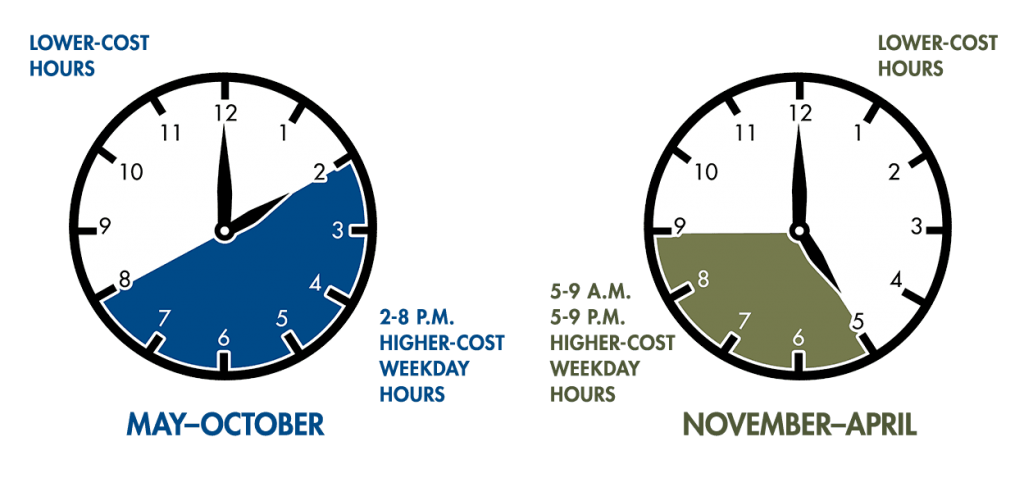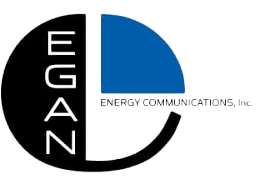
The proliferation of electric vehicles, rooftop solar and other strategic forces afoot in the industry are driving a growing number of electricity providers to implement, or investigate, time of use (TOU) pricing.
For some, this is a big step. Many utilities have long offered only one price option: a flat per-kilowatt-hour price. Leaders considering offering TOU pricing may be wondering how to market this new product. What messages work best? What channels should we use?
Roughly 14% of all U.S. electric companies, including about 50% of shareholder-owned electric companies, offered residential customers a TOU option, according to a 2017 survey from The Brattle Group. Most experts agree that that number has risen in recent years.

Another subject-matter expert, Russell Feingold (left), a vice president with Black & Veatch Management Consulting who leads its Rate and Regulatory group, said a growing number of electric companies are offering at least one TOU option for their residential customers.
“The number of utilities offering TOU prices to residential customers has grown significantly in recent years, and I expect it will continue growing,” he said in an interview.
“Customer education plays a huge role in getting customers to participate,” he added.
Last year the American Public Power Association published a collection of essays on electric pricing strategies, titled Leadership in Rate Design. This fall, the Utility Exchange will feature a session on TOU pricing at its 14th Rocky Mountain Utility Exchange virtual conference, September 29-October 2.
Some electricity providers have offered TOU pricing for decades. Arizona Public Service Company has offered TOU prices for nearly four decades. About 61% of its residential customers are on one of five TOU options offered by the utility. Metropolitan Phoenix’s other electricity provider, Salt River Project, a former employer, also has offered a TOU option for over three decades, and roughly 33% of its customers have chosen to be on one of three TOU plans.
We approached representatives from those two electric companies, as well as others, for tips about marketing TOU pricing.
TOU prices are “a win-win proposition that allows both customers to save money and SRP to reduce peak demand,” said SRP Media Relations Representative Kathleen Mascareñas.
Her key messages were echoed by other electricity providers who offer that pricing option.

When considering marketing a service, it’s best to investigate all seven elements of the services marketing mix, also known as the 7 P’s:

The pie slices in this qualitative diagram are equally sized, but that does not mean they deserve equal attention.
Xcel Energy – Minnesota Develops Innovative TOU Marketing Campaign
It’s been said, by Albert Einstein and others, that solving new problems requires new thinking. Sometimes that new thinking comes from people with different backgrounds. Meet Nikki Caicedo (right), a program manager at Xcel Energy’s Minnesota utility, Northern States Power. She’s leading a team that developed a broad and innovative approach to marketing a time of use (TOU) pilot pricing program.

Rather than studying engineering or finance in college, Nikki studied neuroscience and economics. She learned that people make decisions based on rational factors (a longtime tenet of economics) as well as non-rational factors (as taught by neuroscientists and behavioral economists).
The Minnesota utility took almost two years to develop a pilot program to market its TOU program. It was ready to go to market in April 2020, but that was delayed by the COVID-19 pandemic.
Then, sadly, the Minneapolis pilot community was hurt by the killing of George Floyd and the ensuing protests. Several of the neighborhoods that experienced unrest following Floyd’s death were going to participate in the pilot. A building housing one of Xcel’s community partner groups was destroyed during the rioting. Current thinking is that the pilot is postponed until at least late this year or 2021.
The site of Floyd’s death, and the protests and rioting that followed it, were scheduled to be part of the pilot. Sadly, a building housing one of Xcel’s community partner groups was destroyed during the rioting. Current thinking is that the pilot will open gradually in early 2021.
The utility’s marketing plans were unusually broad and thoughtful.
Nikki is scheduled to speak about the Minnesota pilot program at the previously mentioned 14th Rocky Mountain Utility Exchange virtual conference, coming up this fall in Aspen, Colorado. At the risk of stealing a tiny bit of her thunder, Xcel Energy’s Minnesota unit plans to use a four-step approach to marketing the program:
- Traditional marketing, including print advertising, email and direct mail
- Digital tactics like creating a customer portal where customers can check their energy use and receive tips of reducing energy use (but no digital ads)
- Community Engagement, and
- Personalized coaching on how customers can adopt the desired energy-use behaviors
Energy-company marketers should pay close attention to the third and fourth cluster of tactics, which to my knowledge are not widely used in this industry.
“We wanted to meet customers where they were and provide options that made it easier for them to change their energy-use behavior,” she told me in a recent interview. “Our goal was to better understand customer behavior and making it easy to create new behaviors.”
For example, their research showed that members of Minnesota’s Hispanic and Somali communities tended to be auditory learners. So, the plan is to rely more on advertising on local non-English-language radio stations, rather than running English-language ads on broadcast radio and TV stations. The idea is that people would be more willing to listen to information from people they know and trust. People who look and speak like them, instead of utility employers.
The Minnesota pilot also will use community engagement tactics, Nikki explained. “We’re trying to model new norms about energy use, and community leaders were eager to be part of that. We will be asking community leaders to deliver content at booths.”
The team paid particularly close attention to community leaders as a channel to reach specific communities. “Community leaders responded enthusiastically to our partnering requests,” she said. “They were eager to help us teach members of their community that they have control they have over their energy usage.”
Nikki estimated it took three to four full-time equivalent Xcel Energy employees to develop the pilot customer experience strategy and the marketing campaign. Out of pocket costs are estimated to be about $420,000 over two years, which included research, she said.
Marketing TOU: Tips from Practitioners Who Have Been there
Some electricity providers, including the Sacramento Municipal Utility District (SMUD) and the City of Fort Collins (Colorado), have made TOU the default option for all residential customers.

“One of the things we found out when we went to TOU as the default residential option was that general messaging could frustrate customers,” John Phelan (left) , an energy services senior manager at the City of Fort Collins, said on a webcast organized by the Utility Exchange earlier this year.
“That’s why, as part of the rollout, we developed tools that compared customers’ yearly bills before and after TOU pricing went into effect. Customers could clearly understand if there were likely to be significant impacts to their bills.”
Some customers in deep-green Fort Collins said, “You should offer an EV price option,” and Phelan said the response was, “we do — it’s called TOU.” That might be a message point worth considering when marketing TOU prices to EV owners.
Phelan said the city spent a lot of time and effort educating customers that most of their electric usage took place during off-peak hours. In the first 12-14 months after making TOU the residential default option, he continued, “we sent out a total of about one million customer bills and we received 1,300 phone calls, 150 emails and about 30 inquiries to the city council about the switch to TOU pricing. A few people were extraordinarily upset about it, but most people, after hearing the reasons for the change and experiencing the difference, were OK with the switch.”
SMUD moved to TOU pricing as the residential customer default option in late 2018 because it better reflected its costs of providing service, commented Lindsay VanLaningham, a spokesperson for SMUD. “The purpose was to reduce demand and shift it to a time when renewables were more plentiful.”

Since TOU is SMUD’s default pricing option, she said the energy company is not trying to enroll new participants. “Our message for our customers is strictly based on why we transitioned to it and what it means, and how they can manage their usage to save money. We are very transparent with our customers, so our goal to make sure they understand the rate and how they can benefit.”
Lindsay (right) said SMUD provided educational historical use reports to show what customer bills would look like on TOU compared to a fixed price option so customers could make informed decisions about what fit their families best. Customers can opt-out of TOU if they wish, but few have.
“We used many different channels to get the word out including billboards, buses and mass transit, radio and tv commercials, social media, traditional media, direct mail, community meetings and events with educational materials,” she said in an email interview. “We translated our information into many different languages to ensure we reached everyone.”

SMUD’s website pages on TOU includes a good video explaining TOU prices.
Some customers respond better to visual or auditory signals as opposed to printed materials. For that reason, time spend developing an easy-to-understand video or graphics is critical to marketing TOU prices. How do you know it’s easy-to-understand? Preview it with customers!

Source: Salt River Project
Unlike SMUD or the City of Fort Collins, TOU is still a voluntary program for SRP’s residential customers. But to help customers become comfortable with the voluntary program, it offers a money back guarantee: During a customer’s first 90 days on TOU, if a customer’s first three bills aren’t lower than what they would have paid on the Basic Price Plan, SRP will credit the customer the difference and switch them back to their previous price plan.
It helps inform customers about how they benefit from TOU by showing a monthly savings amount each month in the “Notes” section of their bill.
The price guarantee is a clever idea worth considering by other electricity providers.
_________________________________________________

When Your Community Wants Renewables — Making Changes, Meeting Demand
From finding affordable ways to acquire power from renewable sources, to purchasing offsets and ensuring the proposed plan aligns with community expectations, public power utilities are working to figure out how pursuing or committing to increased renewable power can be viable for the communities they serve.
_________________________________________________

